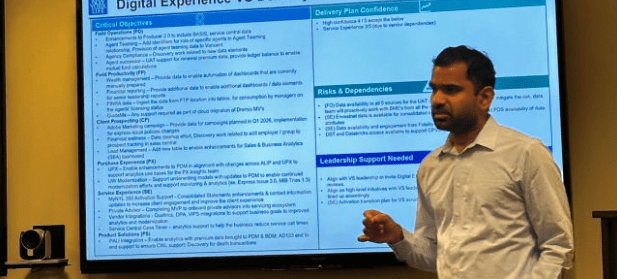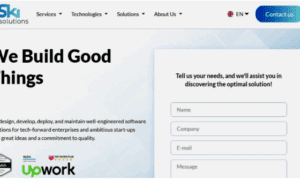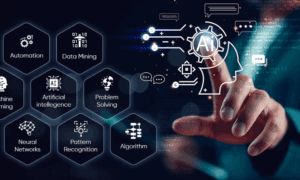In enterprise software, the conversation has shifted from whether AI agents can act to whether they can act safely inside regulated, data-dense organizations. Every workflow, from underwriting to claims to customer service, now runs across systems with conflicting access rules, compliance standards and data formats. The challenge is no longer model accuracy. It is orchestration: how to make AI decisions traceable, align them with enterprise governance and integrate them into production platforms that already carry financial and operational accountability. As companies test agentic AI at scale, the winners will be those who prove reliability and transparency before expansion, turning experimentation into sustained enterprise value.
At the center of this transition is Srinivas Mudireddy, the Corporate Vice President for AI and Data at New York Life and an IEEE Senior Member. His operating principle is straightforward: test real workflows under real constraints, then scale only what demonstrates measurable impact. In 2025 he led the company’s first agentic-AI proof of concept, uniting engineering, product and vendor teams to compare hyperscaler environments, validate orchestration frameworks and define enterprise guardrails for production use. The result was more than a pilot; it was a blueprint for how large financial institutions can adopt agentic AI responsibly, balancing innovation with control.
Platform Decisions That Teams Can Adopt
Moving from exploration to execution begins with the platform, because developer experience, integration paths and security controls determine speed. Across the market, these factors now drive how agentic AI programs start.
Global cloud infrastructure spend reached almost $99 billion in Q2 2025, a reminder that enterprise AI is built where talent and tooling already exist. Organizations reporting active AI use rose to 78%, and day-to-day developer adoption has normalized, with 80% of developers using AI tools at work.
At New York Life, Mudireddy led the four-month proof of concept that brought agentic AI from theory to testable practice. He directed a cross-functional team of product managers, delivery managers and engineers to evaluate how the company could embed agentic workflows into its enterprise systems. Coordinating directly with AWS and GCP engineers, he established criteria for orchestration maturity, integration effort and developer productivity. Under his direction, the team executed the pilot within an accelerated timeline and delivered a data-backed recommendation for AWS based on developer alignment and native system integration. “Platform choices are business choices,” says Mudireddy. “We selected the stack our developers can adopt quickly without sacrificing control.”
Orchestration Built For Trust, Safety And Audit
As soon as a platform is chosen, trust becomes the gating factor. Agentic workflows must be observable, policy-aware and auditable from the start, so security and compliance do not become an afterthought.
The global average cost of a data breach reached $4.44 million in 2025, and the average in the United States hit $10.22 million. Regulators and financial-crime enforcement actions added $4.6 billion in penalties in 2024, reinforcing why orchestration must embed policy and traceability.
Mudireddy turned the proof of concept into a governance model. His team designed orchestration patterns that automated task creation and updating, integrating reinforcement learning to optimize how agents assign and complete work. He front-loaded data-governance controls and built traceability into every workflow, ensuring that AI decisions could be audited as easily as human ones. By running end-to-end simulations that measured latency, throughput and integration complexity, his group proved that agentic workflows could meet enterprise security and compliance standards before scale. “Agents have to be reliable, observable and governed,” Mudireddy says. “We built rails that engineering can operate and risk can verify.”
From Pilot Signals To Business Value
With governance frameworks in place, the team turned to quantifying what those workflows delivered in practice. Once workflows are observable and governed, the only question is value. Operations remain the clearest lens for measuring impact and planning scale. Industry research shows that intelligent automation can reduce enterprise process costs by 25% to 40%, while organizations implementing large-scale automation report at least 25% cost savings. The intelligent process-automation market measured $14.55 billion in 2024 and is projected to reach 44.74 billion dollars by 2030. Enterprise AI investment continues to expand, with spending expected to total $307 billion in 2025, a signal that measurable ROI is now the standard.
At New York Life, Mudireddy defined success in measurable impact, rather than experimentation. He led the pilot focused on policy-administration requests, demonstrating the potential to automate roughly 20 percent of those interactions and unlock over 50 million dollars in annual savings when scaled. He tracked developer effort, integration complexity and iteration speed in hours to inform rollout decisions. The project became a template for how agentic AI can reduce manual workload while preserving transparency in enterprise operations. As a Judge for the Globee Awards for Bridge Innovation, Leadership, and Business, he says, “ROI is earned in specifics. Pick a workflow, prove the lift, then document how to scale it.”
Preventing Pilot Abandonment with Execution Discipline
AI programs stumble because of a lack of structural rigor, rather than a lack of ambition. In 2025, 42 percent of businesses reported abandoning most of their AI initiatives midstream, up from 17 percent a year earlier. Analysts estimate that more than 80% of AI projects never deliver measurable outcomes. Even when pilots succeed, the leap to scale falters: 74% of companies say they struggle to move beyond proof of concept to sustained value.
At New York Life, Mudireddy countered those odds by embedding rigor into every phase. He orchestrated an end-to-end proof of concept over four months, with 16 weeks of hands-on execution, strict weekly check-ins across product, delivery and engineering, and early gating of security, integration and orchestration concerns. Every trade-off was documented; progress was visible to leadership.The result: a repeatable pattern that could not be dismissed—a framework built to endure beyond a single pilot.
As Mudireddy puts it, “Every pilot faces the risk of being shelved; our job was to plan so that it can’t be ignored.”
Looking Ahead, Agentic AI as Everyday Infrastructure
The race to operationalize AI is now entering its durable phase. Across industries, companies are shifting from pilots to production, investing in reliability, governance and performance transparency. Analysts project AI will contribute $19.9 trillion to the global economy by 2030, the enterprise AI market will expand to $229.3 billion and the emerging agentic AI category will reach $41.8 billion by the end of the decade.
Mudireddy’s proof of concept demonstrated how agentic AI can operate safely within enterprise guardrails; the next phase is about scaling that certainty across business units.
“Agentic AI will become an everyday infrastructure. Our responsibility is to scale what works, keep trust non-negotiable and deliver measurable value every quarter.”



































